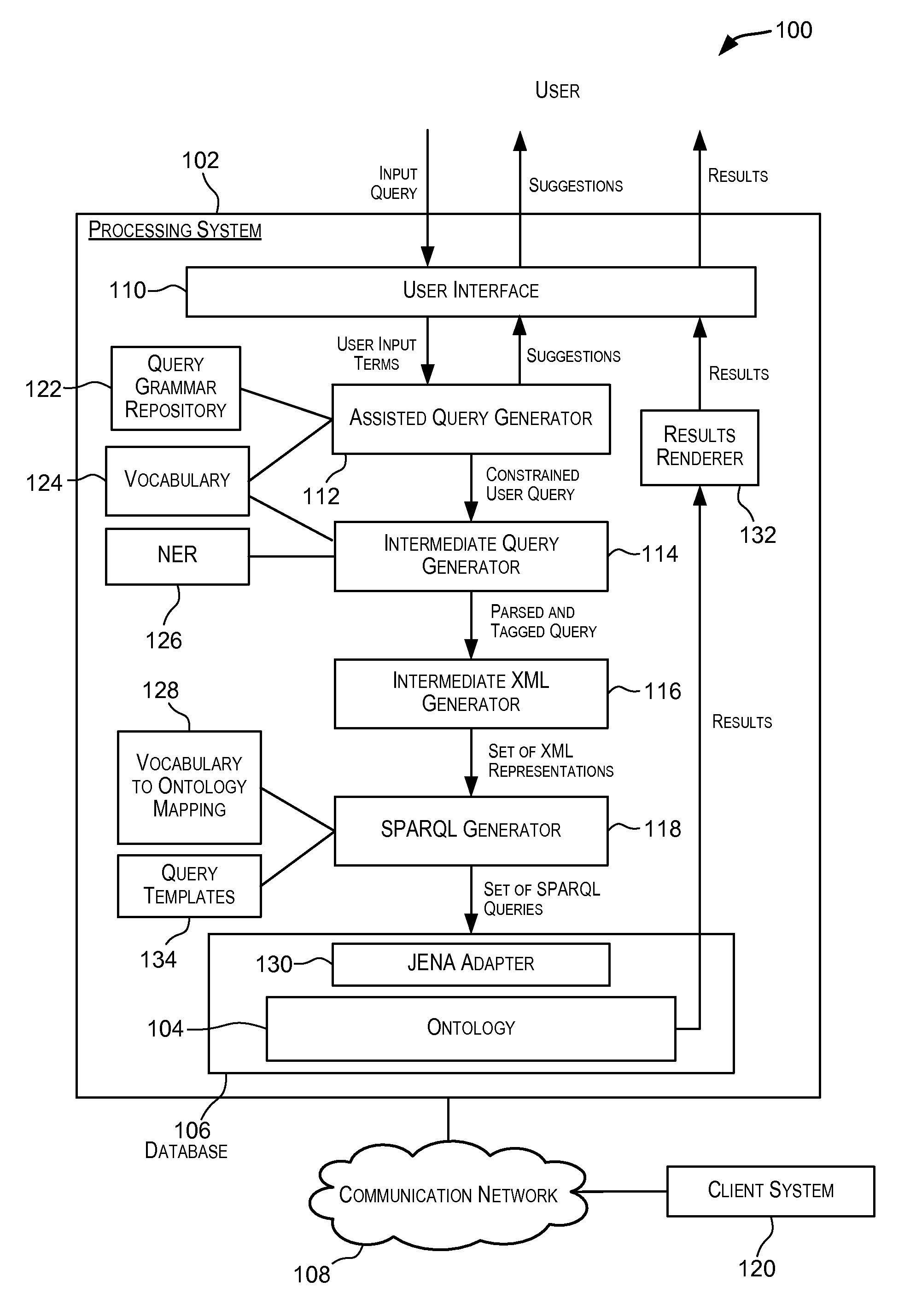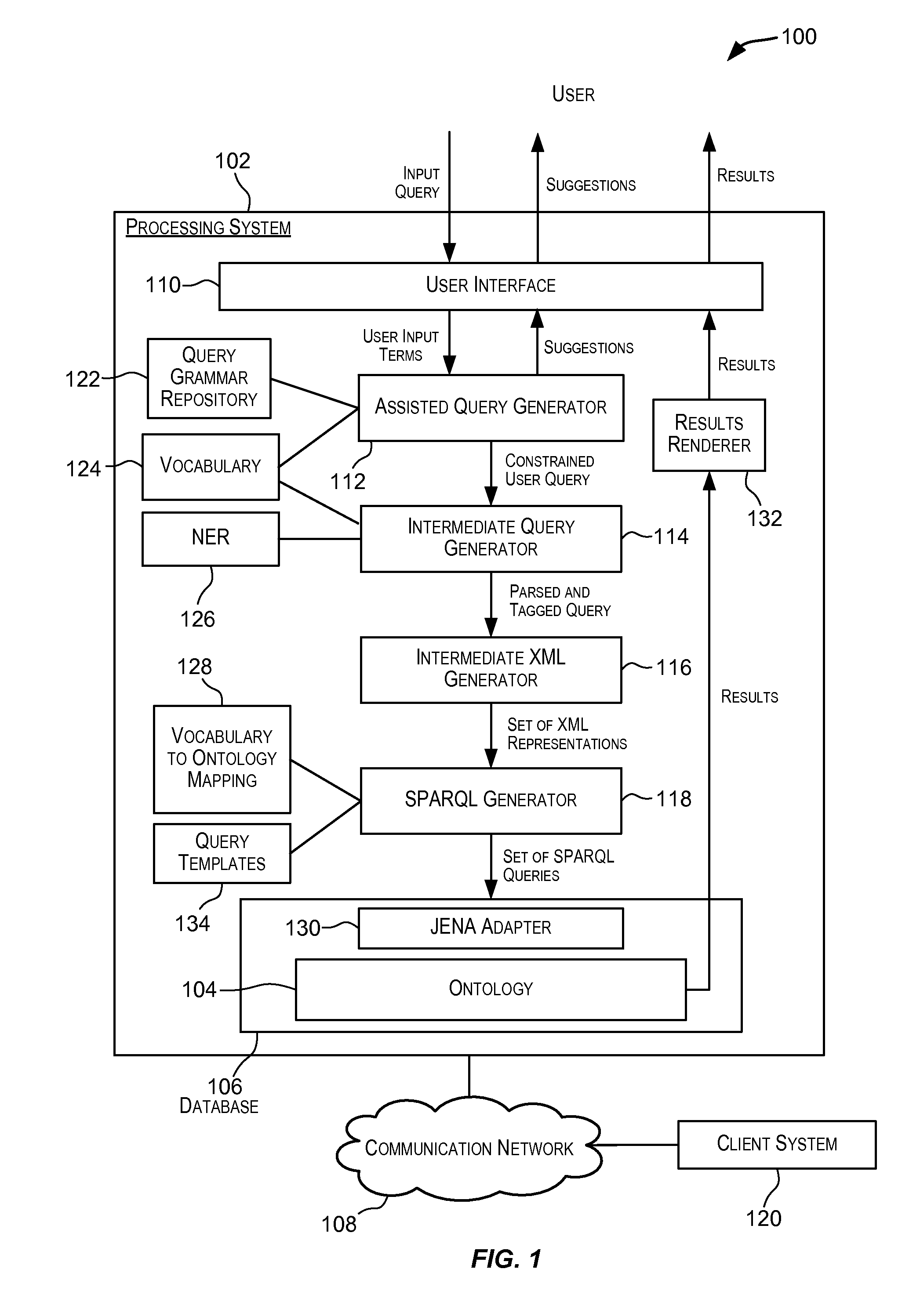Techniques for automated generation of queries for querying ontologies
an ontology and query technology, applied in the field of ontologies, can solve the problems of complicating the sparql query generation, putting an added burden on the end user, and complex end-user sparql query formulation, etc., and achieve the effect of simplifying the querying of ontologies
- Summary
- Abstract
- Description
- Claims
- Application Information
AI Technical Summary
Benefits of technology
Problems solved by technology
Method used
Image
Examples
example
[0073]This section provides an example of generation of one or more SPARQL queries for a user input query according to an embodiment of the present invention. This example is not intended to limit the scope of the application as recited in the claims.
[0074]Assisted constrained sample natural language user query:[0075]Give me eco ids with status=‘open’ and priority=‘high’
[0076]User query after parsing and tagging performed by intermediate query generator 114:[0077][v]give[ / v] [c]eco[ / c] [a]ids[ / a] [a]status[r]=[ / r] [i]‘open’[ / i] [n]AND[ / n] [a]priority [ / a] [r]=[ / r] [i]‘high’[ / i]
[0078]One or more intermediate representations, including a main XML representation corresponding to the tagged query and secondary XML representations, may then be generated by intermediate XML generator 116. The intermediate main XML representation generated for the main query for the above tagged query may be as follows:
[0079]
Give ‘open’ ...
PUM
 Login to View More
Login to View More Abstract
Description
Claims
Application Information
 Login to View More
Login to View More - R&D
- Intellectual Property
- Life Sciences
- Materials
- Tech Scout
- Unparalleled Data Quality
- Higher Quality Content
- 60% Fewer Hallucinations
Browse by: Latest US Patents, China's latest patents, Technical Efficacy Thesaurus, Application Domain, Technology Topic, Popular Technical Reports.
© 2025 PatSnap. All rights reserved.Legal|Privacy policy|Modern Slavery Act Transparency Statement|Sitemap|About US| Contact US: help@patsnap.com



